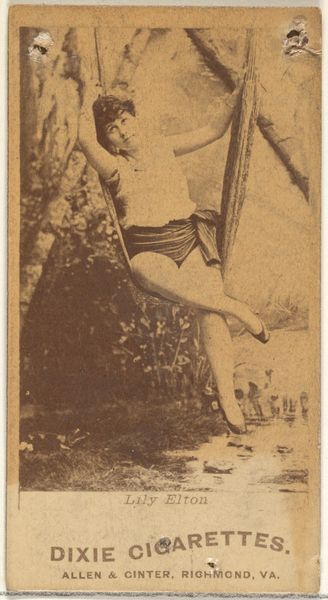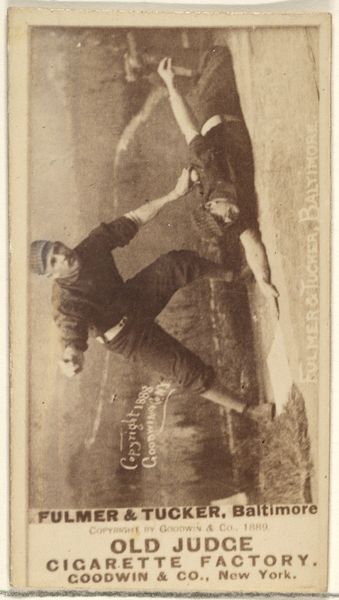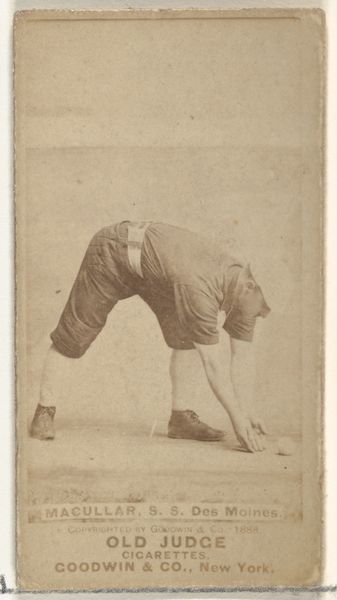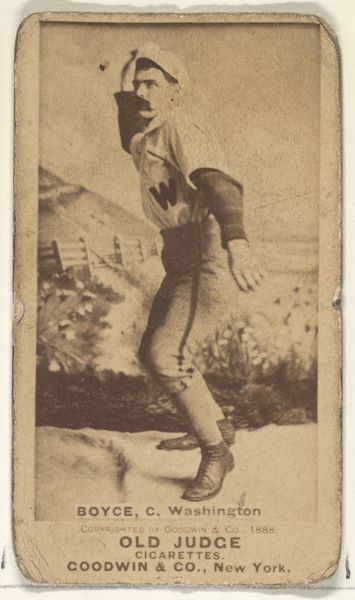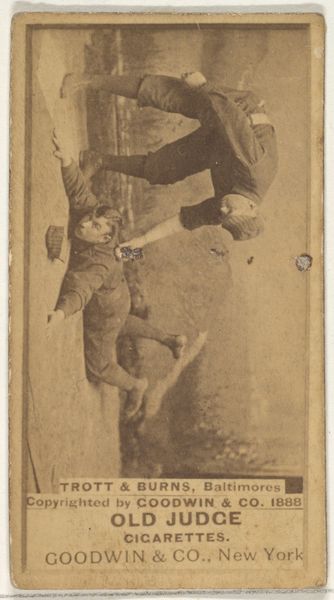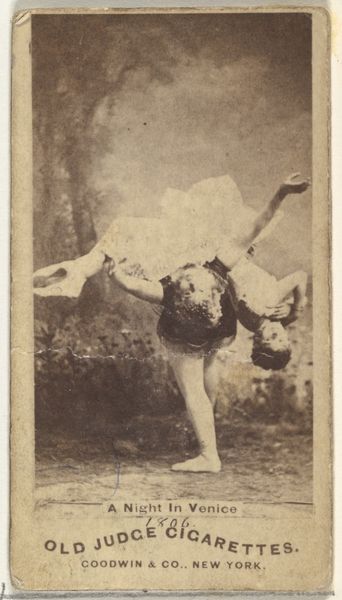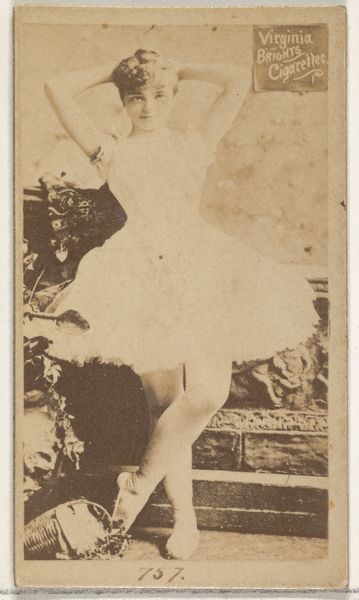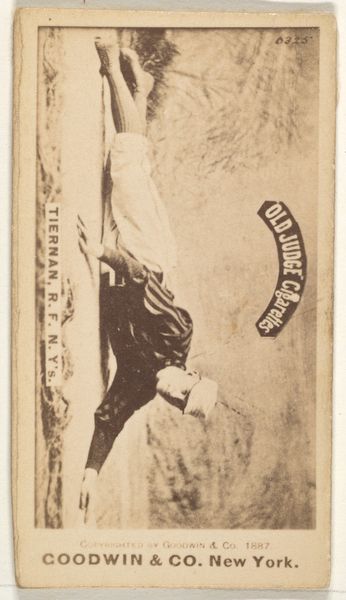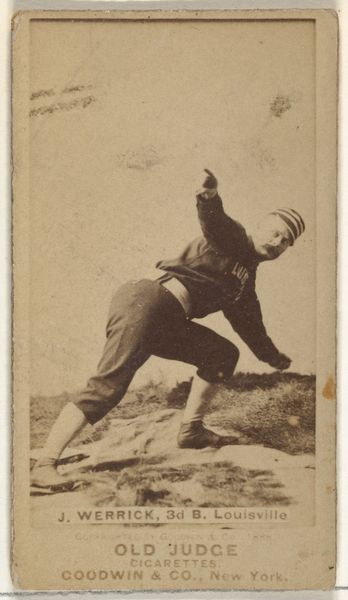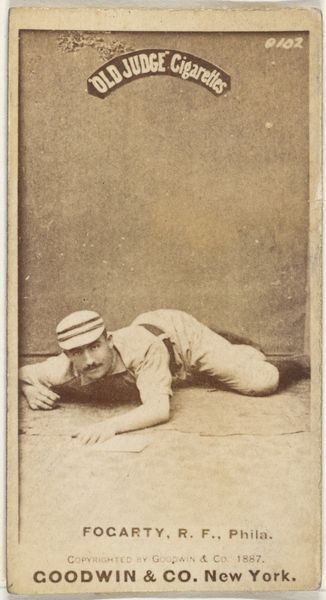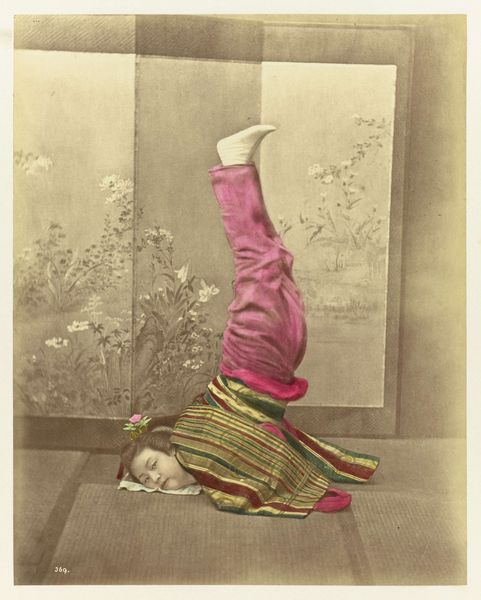
Quinn, 2nd Base, Boston, from the Old Judge series (N172) for Old Judge Cigarettes 1888
0:00
0:00
drawing, print, photography
#
portrait
#
drawing
# print
#
old engraving style
#
baseball
#
photography
#
coloured pencil
#
men
#
athlete
Dimensions: sheet: 1 3/8 x 2 11/16 in. (3.5 x 6.9 cm)
Copyright: Public Domain
Curator: This piece is a rather fascinating artifact from 1888, entitled "Quinn, 2nd Base, Boston," part of the "Old Judge" series (N172). It was created by Goodwin & Company, intended for Old Judge Cigarettes, and here on display at the Met. Editor: My first impression? Utter bewilderment! I mean, he's standing on his head against a painted backdrop...it's so theatrical! Is that even baseball-related? What's the emotional landscape here? Pure performance? Curator: Well, these cards served as advertising. Goodwin & Company cleverly linked leisure – baseball – with vice, appealing to a broad audience. It also speaks volumes about celebrity culture then; a glimpse into how athletes were marketed to the masses via the rise of mass media. Editor: A vice card! Hilarious. You’re right; it’s a miniature billboard, pushing both baseball and smokes. He’s got such focused calm in his eyes, though... it’s that turn-of-the-century "stiff upper lip" vibe dialed up to eleven. Maybe he secretly hates being upside down. Curator: Exactly! It underscores the constructed nature of imagery. We're not seeing raw athleticism; we're seeing a performance curated for commercial gain. Consider that photographers often retouched or staged photos, sometimes blurring the lines between authenticity and fabrication. Editor: So, the artist is sort of setting the stage, and poor Quinn has to deliver... while inverted! I dig the odd composition, too. A very formal athlete amidst a haphazard fantasy. It’s as if athleticism is crashing the art scene, and it does that with the perfect, disorienting absurdity. Curator: It truly encapsulates the commercial landscape of the time. The image, initially captured through photography, then transformed into prints, became widely circulated—an early form of virality, if you will, solidifying the intertwining of sport, advertising, and identity. Editor: Thinking about poor Mr. Quinn having to deal with all of that, makes me feel really grounded and appreciative of the athleticism, and not only because the world is thankfully not upside down at this moment! Curator: Agreed. Understanding the artwork’s intersection within culture allows us a broader scope for looking at a complex relationship of representation.
Comments
No comments
Be the first to comment and join the conversation on the ultimate creative platform.
